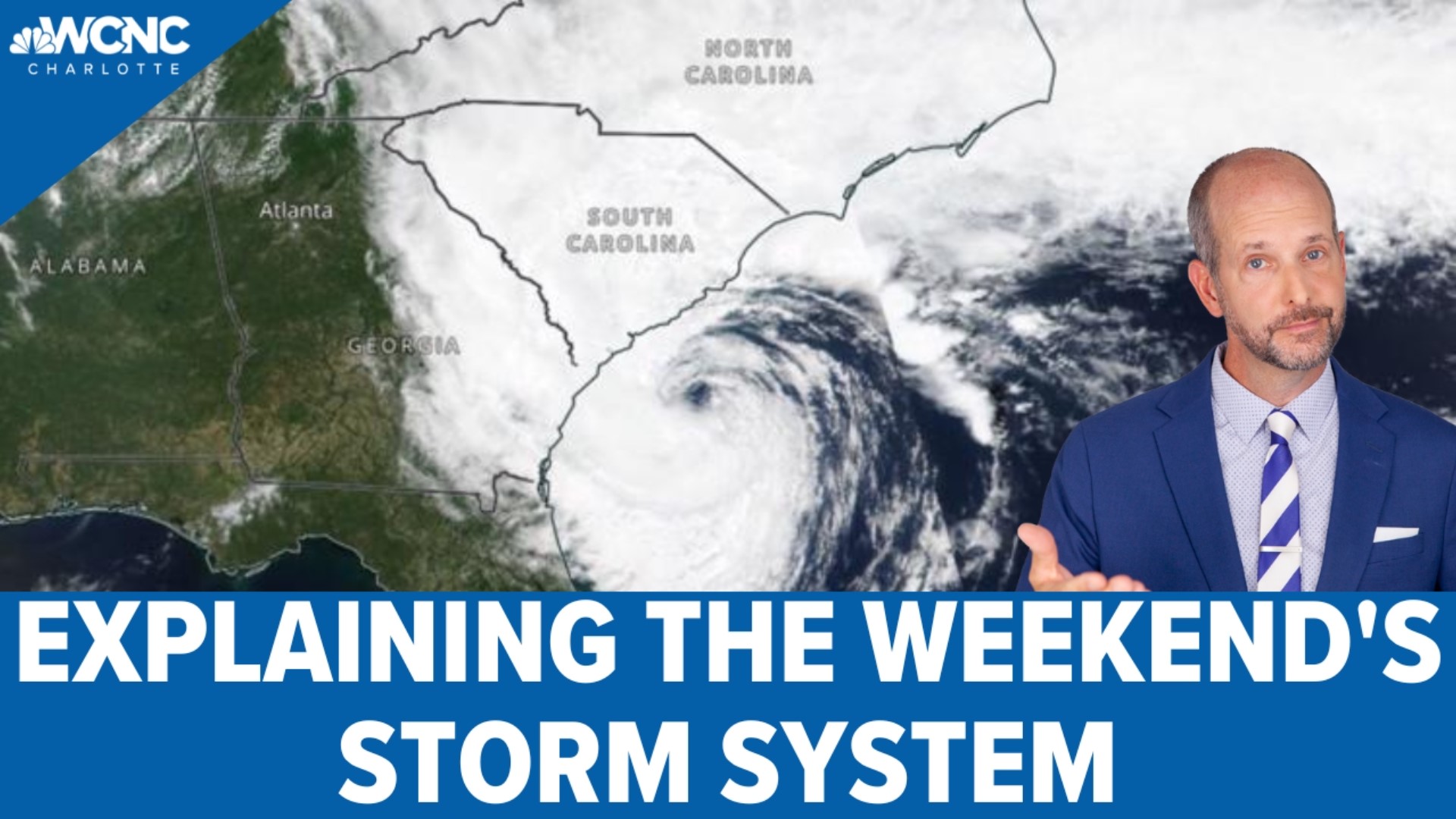CHARLOTTE, N.C. — This weekend we had a storm on the coast that resembled a tropical system or even a subtropical storm. So why did it not get the name? Well, first, we need to know the difference between tropical and subtropical systems.
Tropical storms and subtropical storms are both types of low-pressure systems that form over warm ocean waters and can produce strong winds, heavy rain, and sometimes hurricanes. However, they have some key differences in their structure and origin.
A tropical storm is a well-organized system with a warm core, meaning that the temperature at the center of the storm is higher than the surrounding air. A tropical storm has a symmetrical shape, with thunderstorms and rain bands concentrated near the center. A tropical storm also has a clear eye, which is an area of calm weather at the center of the storm. A tropical storm forms when a tropical depression, which is a weaker low-pressure system, reaches sustained winds of 39 mph or higher.
A subtropical storm is a less-organized system with a cold core, meaning that the temperature at the center of the storm is lower than the surrounding air. A subtropical storm has an asymmetrical shape, with thunderstorms and rain bands spread out over a large area. A subtropical storm may or may not have an eye, depending on how much it resembles a tropical storm. A subtropical storm forms when a non-tropical low-pressure system interacts with warm ocean waters and develops some tropical characteristics.
The main difference between a tropical storm and a subtropical storm is the source of their energy.
A tropical storm gets its energy from the latent heat released by the condensation of water vapor in thunderstorms. A subtropical storm gets its energy from both the latent heat and the temperature contrast between the warm ocean and the cold air aloft.
Both tropical storms and subtropical storms can pose a threat to coastal areas, as they can bring strong winds, heavy rain, flooding, and storm surges. However, subtropical storms tend to be weaker and more unpredictable than tropical storms. Subtropical storms can also transition into tropical storms if they move over warmer waters and develop a warm core.
The National Hurricane Center (NHC) monitors and forecasts both tropical storms and subtropical storms in the Atlantic and Eastern Pacific basins. The NHC uses different symbols to indicate the type of storm on their maps: a red circle for a tropical storm and a yellow circle for a subtropical storm.
The NHC also assigns names to both types of storms when they reach sustained winds of 39 mph or higher. The names are chosen from a list that alternates between male and female names in alphabetical order.
The weekend system had fronts attached to it and was mainly cold core. So in the opinion of the National Hurricane Center, it did not get a name. However, there was honestly some subjectivity to this decision since it was a close call for being a subtropical storm.
Contact Brad Panovich at bpanovich@wcnc.com or follow him on Facebook, Twitter and Instagram.

